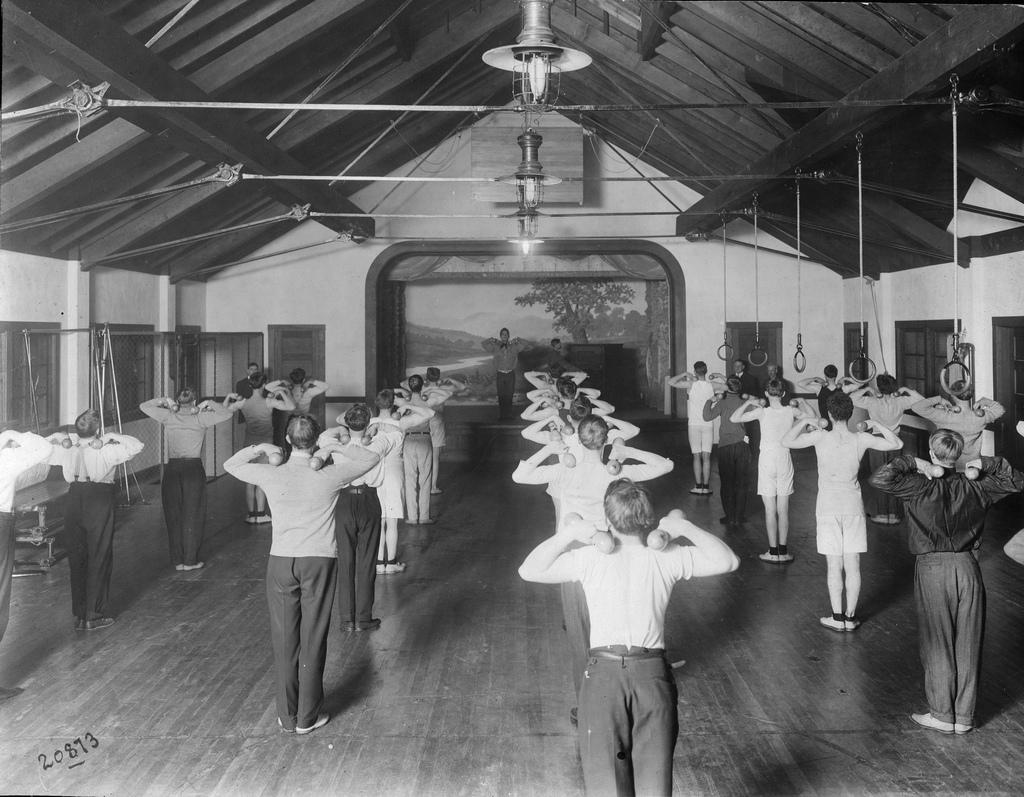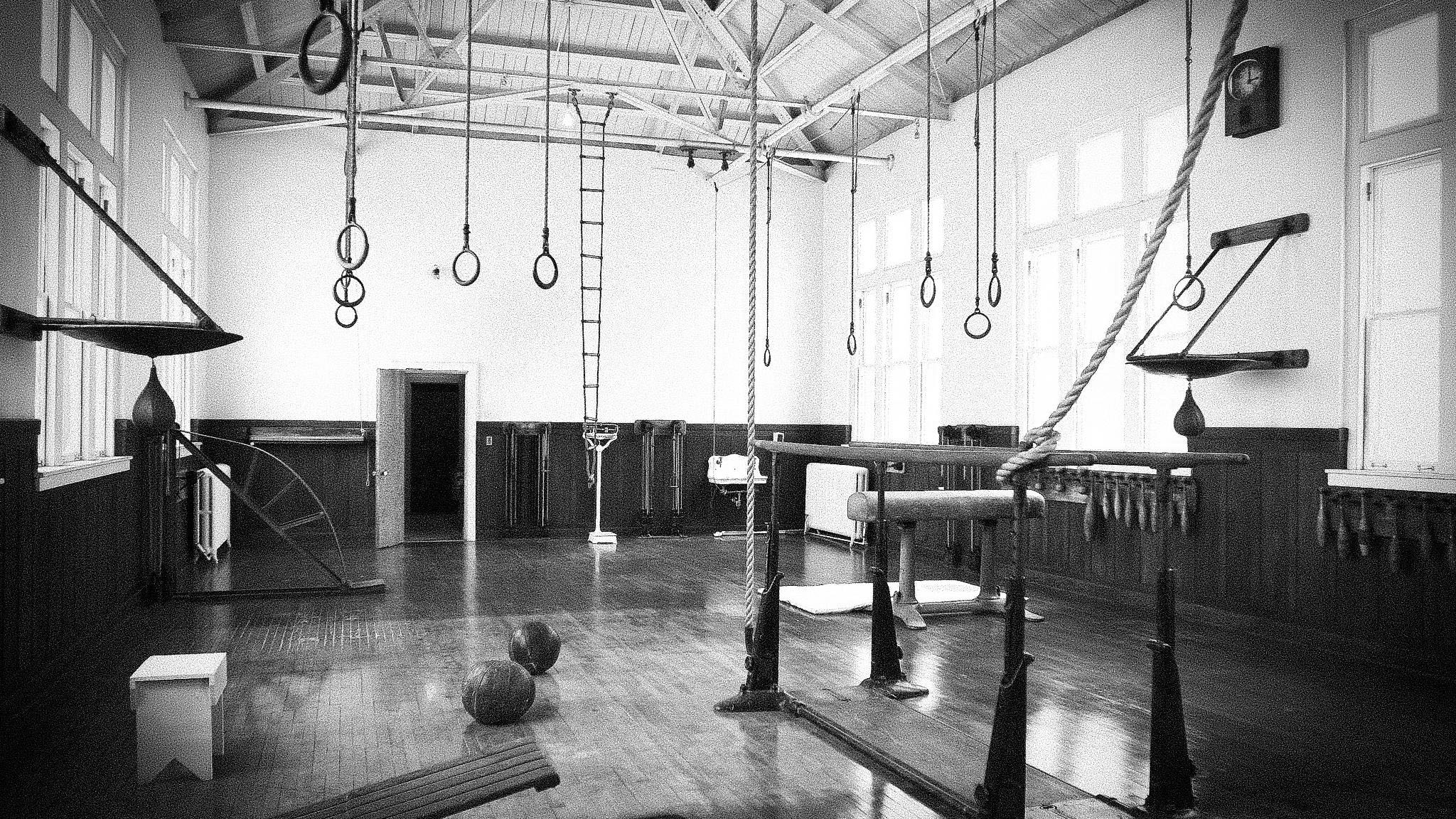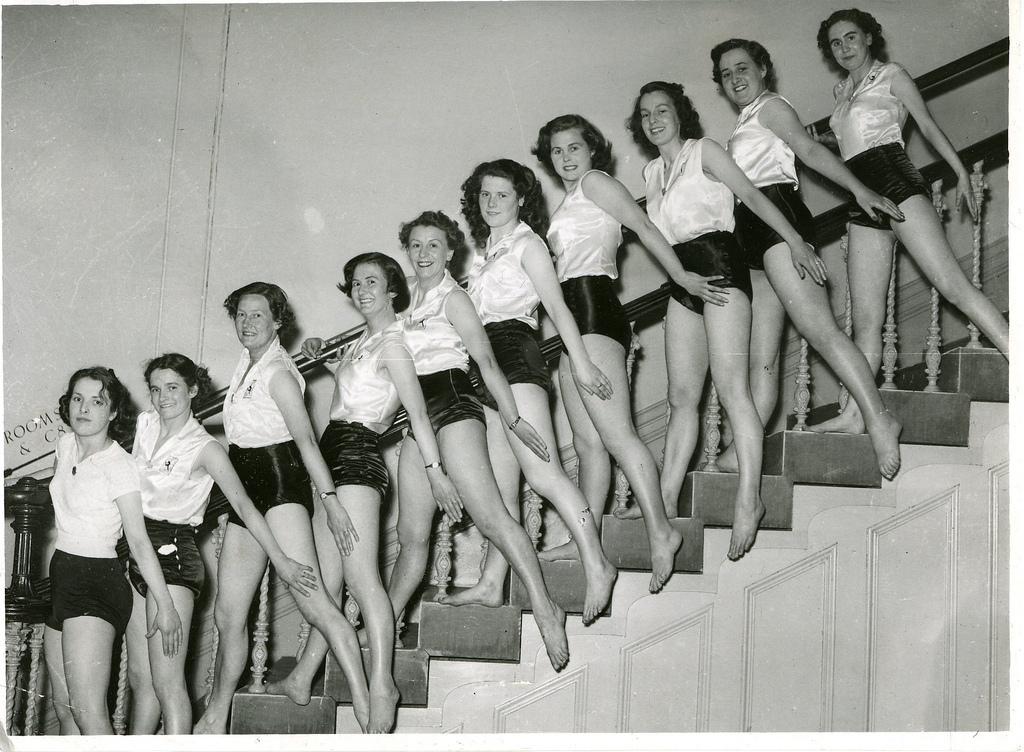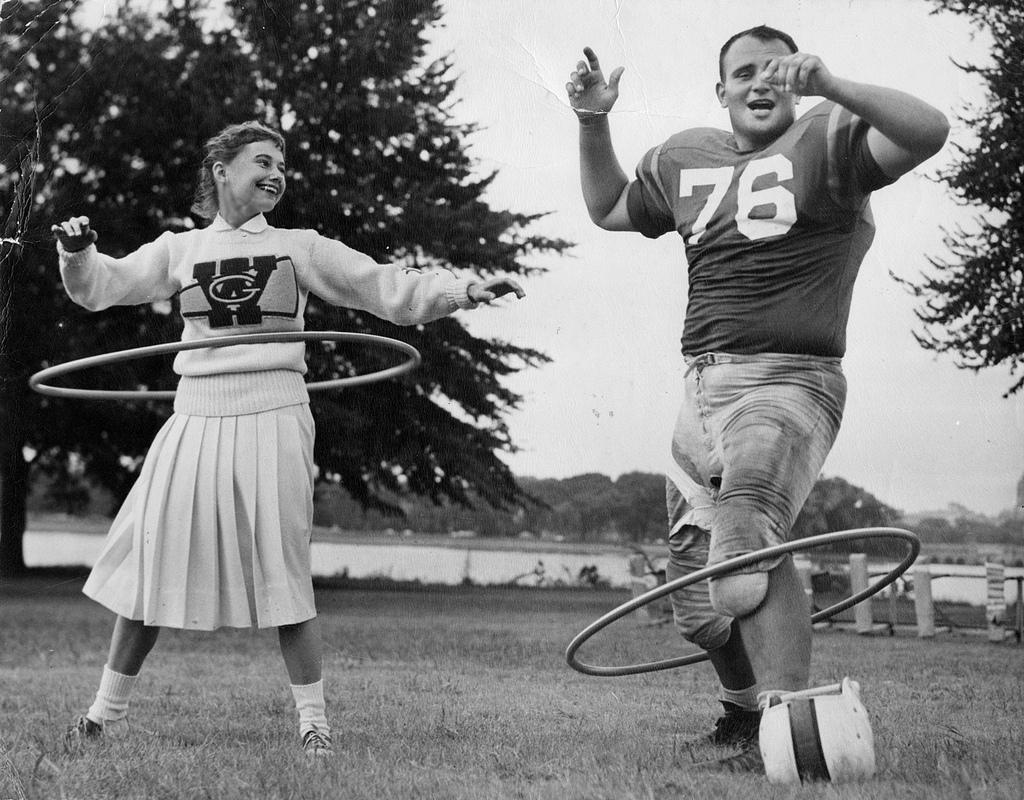Celebrating 100 Years of 'Keep Fit'
A visual history of exercise trends, techniques and fashions
100 Years of Fitness in 100 Seconds
Health and fitness is at the forefront of modern life. Across the world, people of all ages make a conscious effort to eat well and move more, whether that be through jogging, cycling, swimming, exercise classes or gym sessions.
We are very lucky to live in an age where we can take our pick from numerous types of exercise, to find one that suits us. What you might not know is that keeping fit didn’t begin with Lycra and aerobics classes. Men and women have been keeping themselves in shape for more than a century and, in many cases, with strange equipment bearing little resemblance to what we use today.
As far back as the 1910s, men and women were conscious of their health and fitness. Their ankle-length attire and sharp suits didn’t hold them back: they took to early exercise bikes, weights and carefully-considered stretches with gusto.
Women took to weight training with enthusiasm. They swung bowling pin-shaped dumbbells around their heads with no discernible routine, and yanked on resistance machines as quickly and as strongly as they could manage.
Other women preferred gentle stretches. Nowadays, we mostly view stretches as a means to warm up or warm down, but in the 1910s, they were seen as a serious form of exercise that could reap specific end results. Namely, developing and improving the hips and, believe it or not, easing constipation.
The former was achieved by propping themselves up on their hands and feet before raising one leg at a time, as high as they could. The latter wasn’t quite as strenuous: it involved pulling one knee up, hard, against the body, before doing the same with the opposite leg.
The Roaring Twenties was more famous for the Charleston than everyday forms of exercise, but dancing wasn’t the only way in which men and women kept fit.
Much like the 1910s, the stretches we’d consider mere warm up exercises today were thought to be the perfect workout. Women could be found touching their toes or sitting cross-legged on the floor, rotating their heads, in the comfort of their own homes. These stretches were all carried out in full makeup and everyday clothes, from the loose-fitting dresses of the era to silk nightgowns.
'Shadow shrinking' exercises
Women in search of a more invigorating exercise regime turned to machines incorporating vibrating belts that were said to eliminate fat, and wooden treadmills that would likely be considered a health and safety hazard today! However this equipment was mostly located in dedicated gymnasiums filled with specialist apparatus, which were the sole preserve of the upper classes, film stars and others with money to spare.
In many ways, the 1930s marked a departure from the vibrancy and energy of the Roaring Twenties. Dresses became more fitted, hair more coiffed and makeup more sophisticated. At the same time, attitudes to fitness made a concerted leap forward.
The new wave of exercise started in 1930, with the founding of the Women’s League of Health and Beauty by Mary Bagot Stack. During her early life in India, she was quick to notice how easy it was for women to bend from a waist unconstrained by the restrictive fashions worn back home in Ireland. ‘Movement is life’ became her motto, and her simple vision of “a league of women who will renew their energy in themselves, and for themselves, day by day,” captured the imaginations of many.
This, it could be argued, is a similar sentiment to that pushed by fitness gurus today – exercise for health and wellbeing, not just weight loss. In fact, you could say that Bagot Stack created the very first exercise class.
The Women's League of Health and Beauty at Wembley
The Women’s League of Health and Beauty prescribed equal parts hard work, good fun and the infectious, sociable atmosphere that comes from working out in a group. Members of the League carried out routines involving leg lifts, star jumps, touching the toes and more, in synchronised mass formations: moves specifically designed to benefit the body.
Women across Britain (and eventually, the world) took to Mary’s teachings and, just seven years following the League’s inception, it boasted 166,000 members! With a membership fee of just two shillings and sixpence, and an affordable uniform consisting of a white satin blouse and black satin knickers, coordinated exercise was, for the first time, accessible to all.
The 1940s
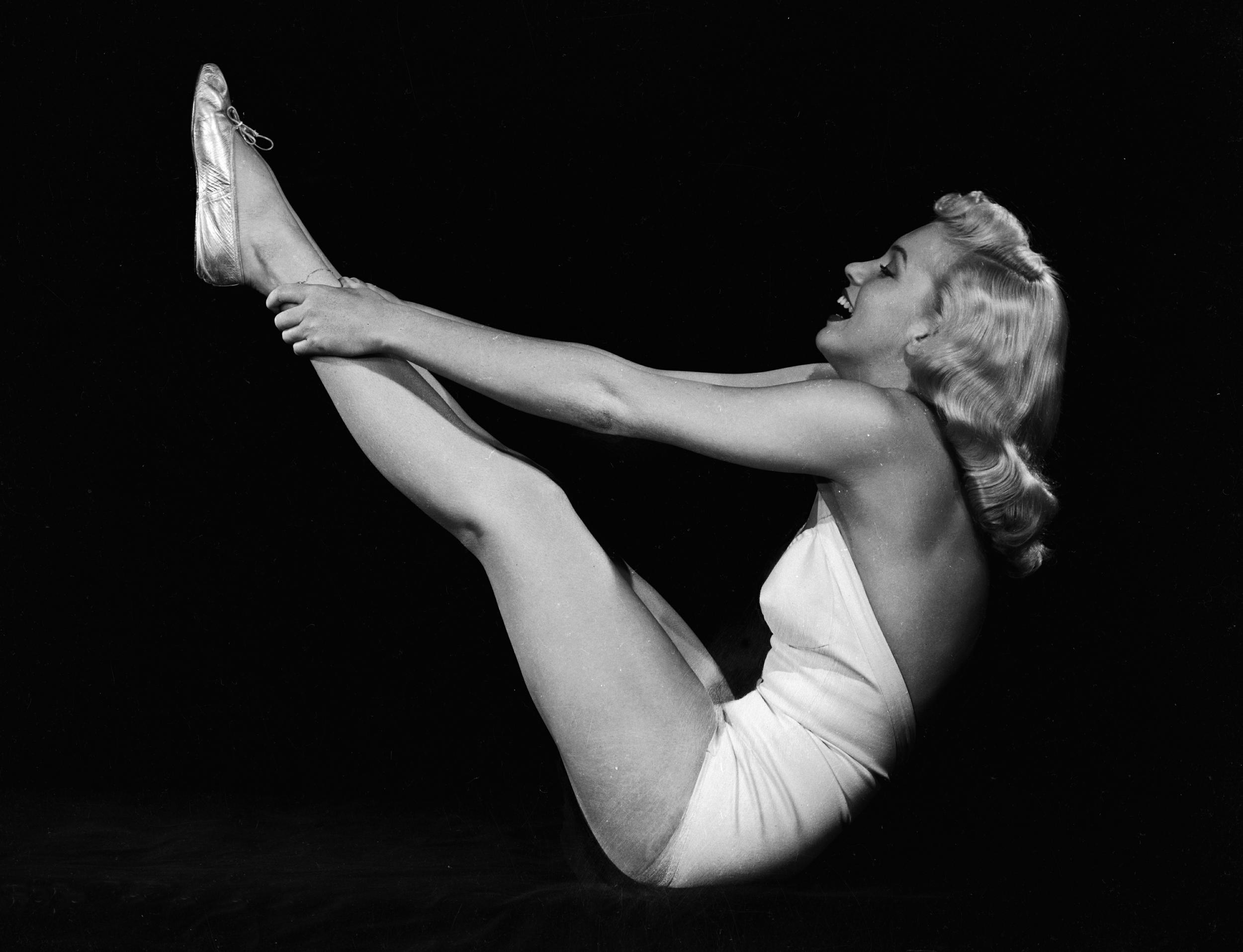
The Women’s League of Health and Beauty maintained a large membership during, and beyond the 1940s. During this decade, however, fitness and exercise became more focused upon physical attractiveness. That is, when women weren’t busy taking on the jobs occupied solely by men before the onset of World War II.
In fact, many women were so preoccupied with work that conscious exercise took a backseat, with hard labour and rationing being the things to contribute to better health. Infant mortality declined while life expectancy rose, simply because everyone now had access to a varied diet incorporating enough quantities of the right vitamins.
When exercise did come into the picture, it was carried out in a way that greatly reduced the appearance of sweat or muscle definition. These things were seen as very unfeminine, which meant that genteel home exercises were the order of the day. Archive footage from the time shows women standing on the spot in their bedrooms, in their underwear, rotating the top half of their body from the hips. Other movements involved an early form of sit-up, and touching the toes from a sitting position.
'I must improve my bust'
The 1940s also gave way to the ‘I must improve my bust’ movement. The waif-like figure of the 1920s was long gone, and a more curvaceous shape was now seen as desirable. To make this a reality, routines that involved gently rotating each arm like a propeller before rotating both arms while bent at the elbow, were common.
It sounds easy, but try doing it in the heels sported by many women during this era!
With the variety of exercise options at our disposal today, the ‘keep fit’ routines of earlier times can seem relatively hum-drum. The 1950s, however, was a decade personified by fun, and this applied to ‘keep fit’ too. New pieces of kit were added to the more traditional floor exercises: enter the hula hoop and the Bongo Board, the fitness craze that spawned the modern balance board.
Who could have known that something as simple as a plastic exercise hoop would have taken off so astronomically? 25,000,000 hula hoops were sold in less than four months, while over the next two years, sales exceeded 100,000,000 units.
Children and adults alike were swept up in the craze, but while the younger generation saw the hula hoop as good old fashioned fun, men and women were quick to catch onto the potential health benefits of the toy (with a little help from marketing campaigns, of course). Whether you wanted to show off your skills or burn some calories, the hula hoop was the tool of choice.
The Bongo Board
The Bongo Board, too, remains unchanged. The early models worked in exactly the same way as today: a see-saw type board balanced on top of a rolling cylinder or ball. Nowadays, balance boards are usually the preserve of surfers and sports people, but back in the 1950s, they were marketed as a fitness tool for the average Joe. They were described as,“Kind of a sawn-off see-saw for one Marjorie Daw at a time,” and were applauded because, “By using Bongo… bingo! Everything shapes up nicely.”
The 1960s
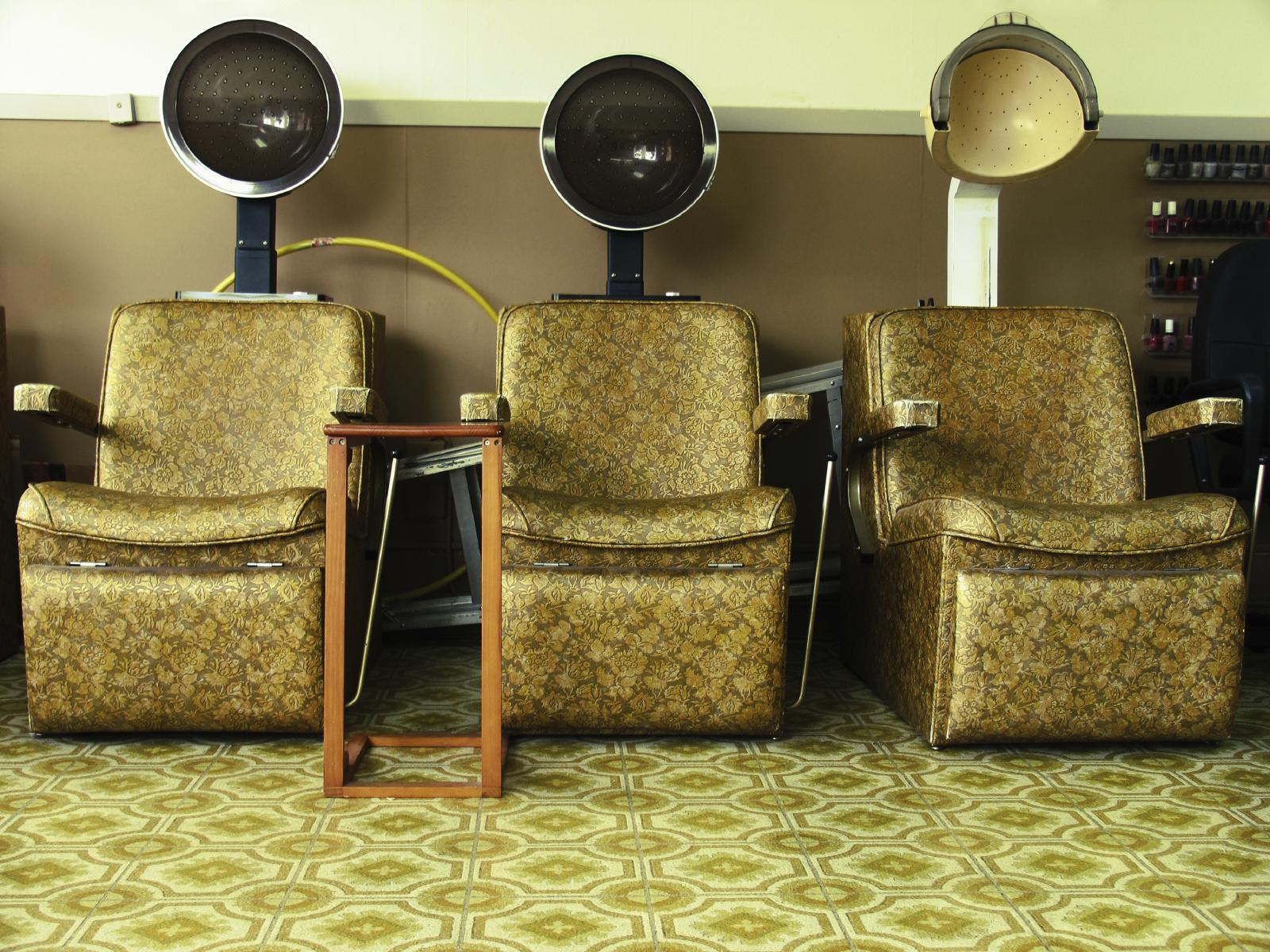
The 1960s were revolutionary in more ways than one! Hair and makeup became bigger, brighter and bolder to match kaleidoscopic clothes with rising hemlines. Exercise, too, stepped up a gear, with the opening of women’s fitness centres. They were called ‘figure salons’ and, rather than concentrating on working up a sweat, were focused on weight loss through much more passive forms of exercise…
An afternoon at the 'figure salon'
Ladies simply stood on, sat on or leaned against an array of bizarre-looking machines designed to eliminate fat. Rolling machines covered in small bumps were marketed as being able to roll away problem areas, while vibrating belts that wrapped around the thighs were supposed to jiggle away any excess. One popular way to stay trim during the Swinging Sixties, however, was the humble ‘Trim Twist’.
Made from a square of pressed board mounted on top of a metal turning mechanism, this portable piece of kit was marketed as ‘the executive exerciser’ and became a hit with housewives and office workers alike. Designed to firm up the stomach, bottom, arms and legs, with no need to change out of your everyday clothes, the Trim Twist could be used anywhere, anytime.
The 1970s
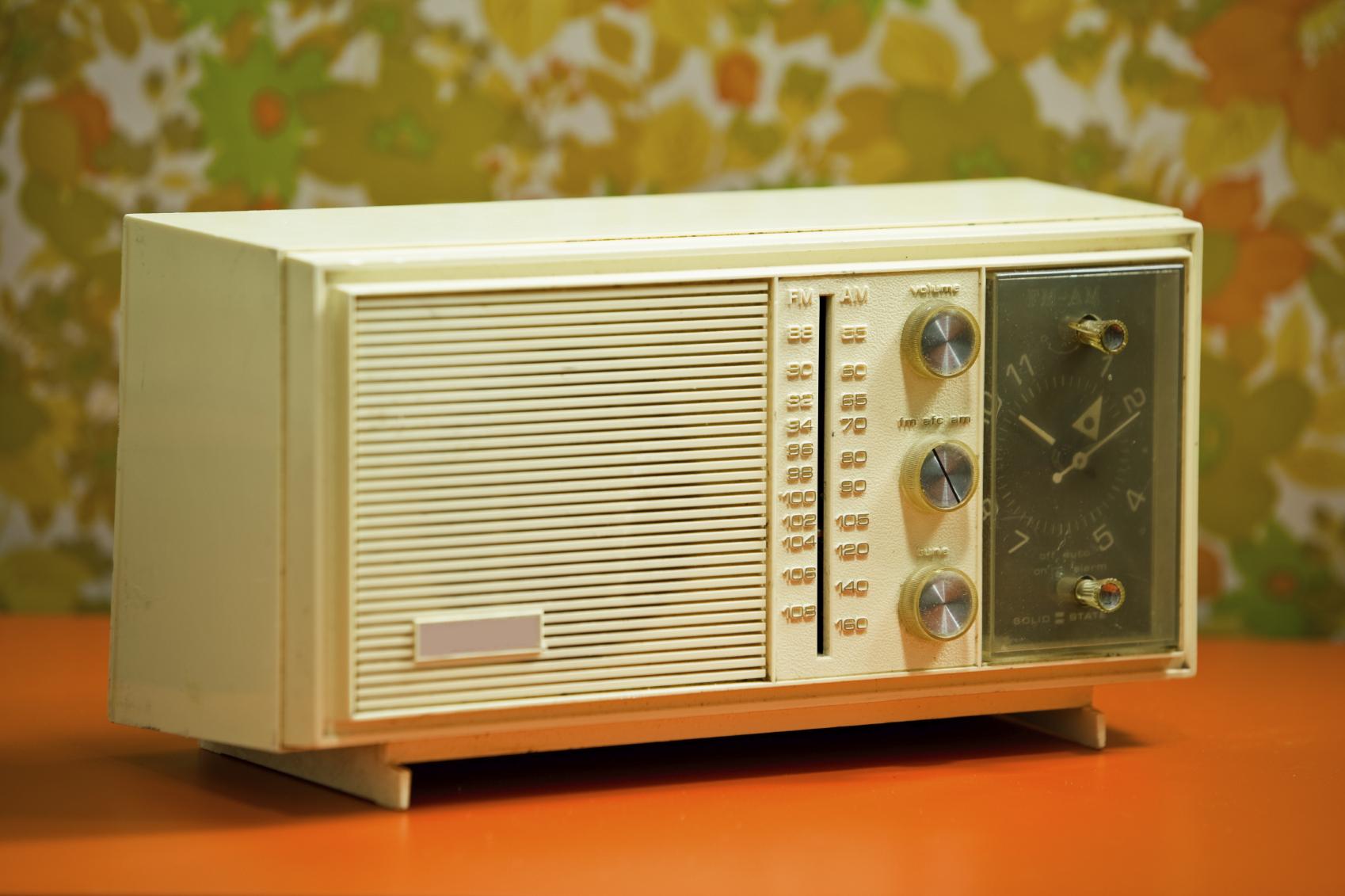
The 1970s marked another departure for health and fitness. Gone were the passive exercise machines and Trim Twists. In their place, taking the nation by storm, was the phenomenon called Jazzercise.
Pioneered by former Broadway star Judi Sheppard Missett (who began her dancing career aged 14 and is still the franchise’s CEO), this combination of aerobic exercise and jazz dancing transformed the fitness industry. It’s a far cry from the dance classes she first taught during her years at university…
Faced with a 90% dropout rate, Judi knew she had to try a different approach. Instead of focusing on turning her students into professional dancers, she turned her attention to helping them shape up and have fun, having them face away from the mirrors and reigning in professional criticisms. Her attendance rate tripled, and these new classes soon transformed into the Jazzercise we associate with leotards and ‘flippy curl’ hairstyles: an exercise class designed to slim and tone with a full-body focus.
Jazzercise with Judi Sheppard Missett
First came a warmup, followed by fun and peppy aerobic and muscle-toning movements. Next, Jazzercisers would cool down before carrying out flexibility ‘segments’ intended to keep the body supple.
With energetic music and a lively group atmosphere, this precursor to aerobics proved to be so much fun that it is still practised today, in 32 countries!
The 1980s
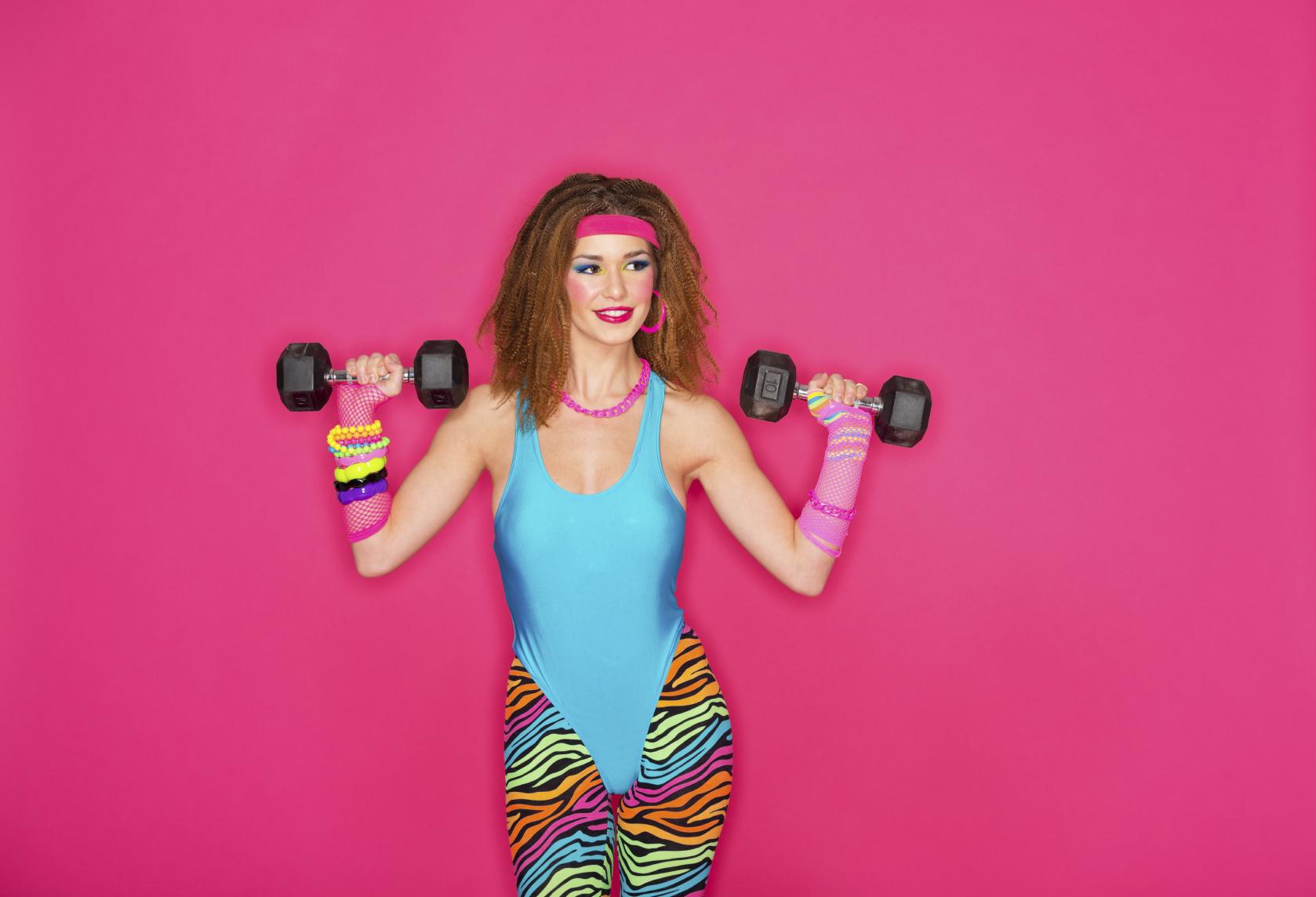
If one decade truly cemented health and fitness in the public consciousness, it was the 1980s. Even those who weren’t alive in this era can recognise the iconic look: big hair, high-legged leotards, day-glo leggings and leg warmers. This was, of course, the decade of aerobics.
After research performed at the Kenneth Cooper Clinic in Dallas, USA, illustrated the importance of aerobic exercise, members of the public were quick to embrace the idea. Celebrities started doing it – many even promoted it – and physical fitness became something of a status symbol! One exercise magazine described workout fanatics as “an emerging super-race… guilt-inducing to the rest of us, exhilarating to those who are ‘in’.”
The Crystal Light National Aerobic Championship, 1988
The first celebrity fitness videos meant that stars like Jane Fonda could bring the fitness craze directly into the homes of people who wanted to give aerobics a try. It has even been claimed that many people bought video players – which were, at the time, new to the market – just so they could do one of Jane Fonda’s workouts.
The actress-turned-fitness guru went on to release 23 exercise videos, with the combined series selling 17,000,000 copies: more than any other exercise series!
The 1990s
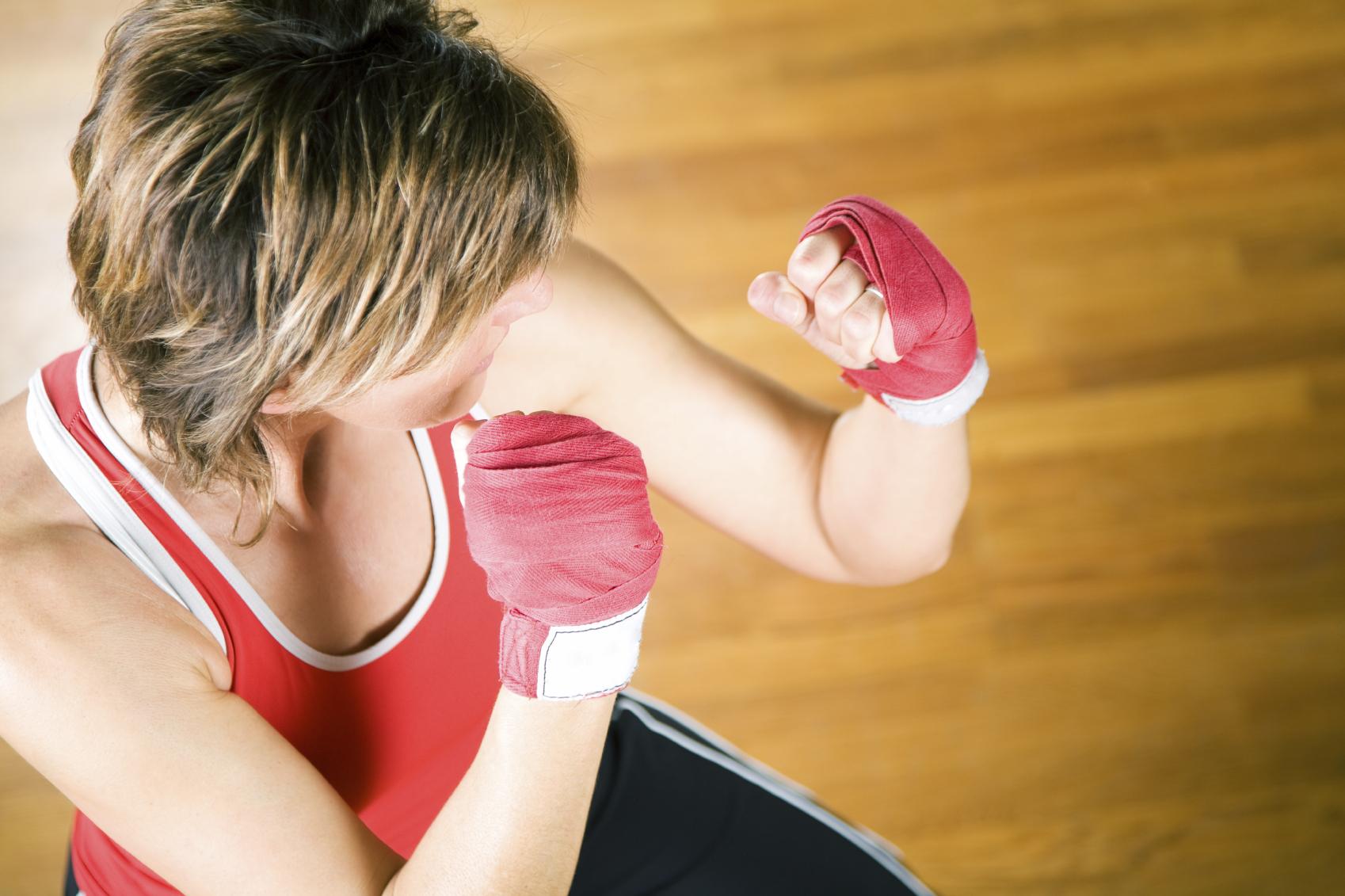
Where the 1980s had Jane Fonda, the 1990s had Cindy Crawford. But Crawford’s famous workout video, Buns of Steel, wasn't the biggest trend to hit the fitness industry during this decade: that label goes to Tae Bo.
Tae Bo with Billy Blanks
Pioneered by Billy Blanks, an American taekwondo instructor, this new fitness trend combined taekwondo and boxing to create movements designed to promote fitness and work every area of the body. The name of the practice even came from an inspirational backronym:
· Total commitment to whatever you do
· Awareness of yourself and the world
· Excellence, the truest goal in anything you do
· (the) Body as a force for total change
· Obedience to your will and your true desire for change
After trademarking the name of his new form of exercise, Billy Blanks brought Tae Bo to the public with the release of countless video workouts. Gyms soon followed suit, offering kickboxing-based cardio classes that paved the way for many of the workouts we love today.
The 2000s
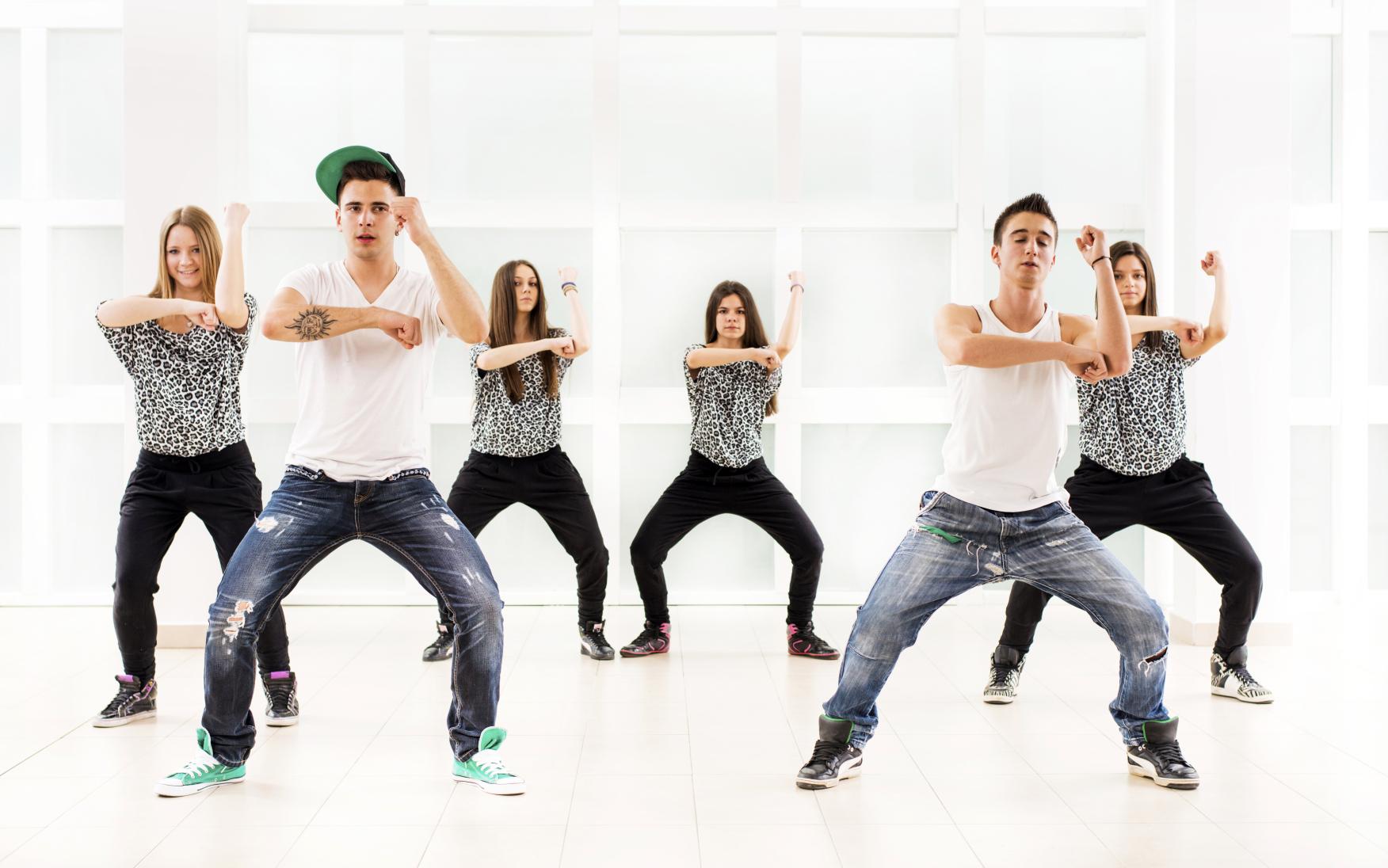
The 2000s were the decade in which fitness through dance made a return.
‘Street dance’ passed through school yards, raves and local neighbourhoods to become the fitness trend of choice, particularly for the younger generation. It eventually seeped into dance studios and gyms, and people all over the country took to the floor to test their moves.
Street dance, step by step
Originally these dances would have been completely improvised, but with the dawn of street dance classes came the development of routines incorporating a number of characteristic movements. ‘Locking’ and ‘popping’ the body in various ways, bobbing and weaving, and grabbing or punching through the air appear in almost every modern street dance routine.
The 2010s
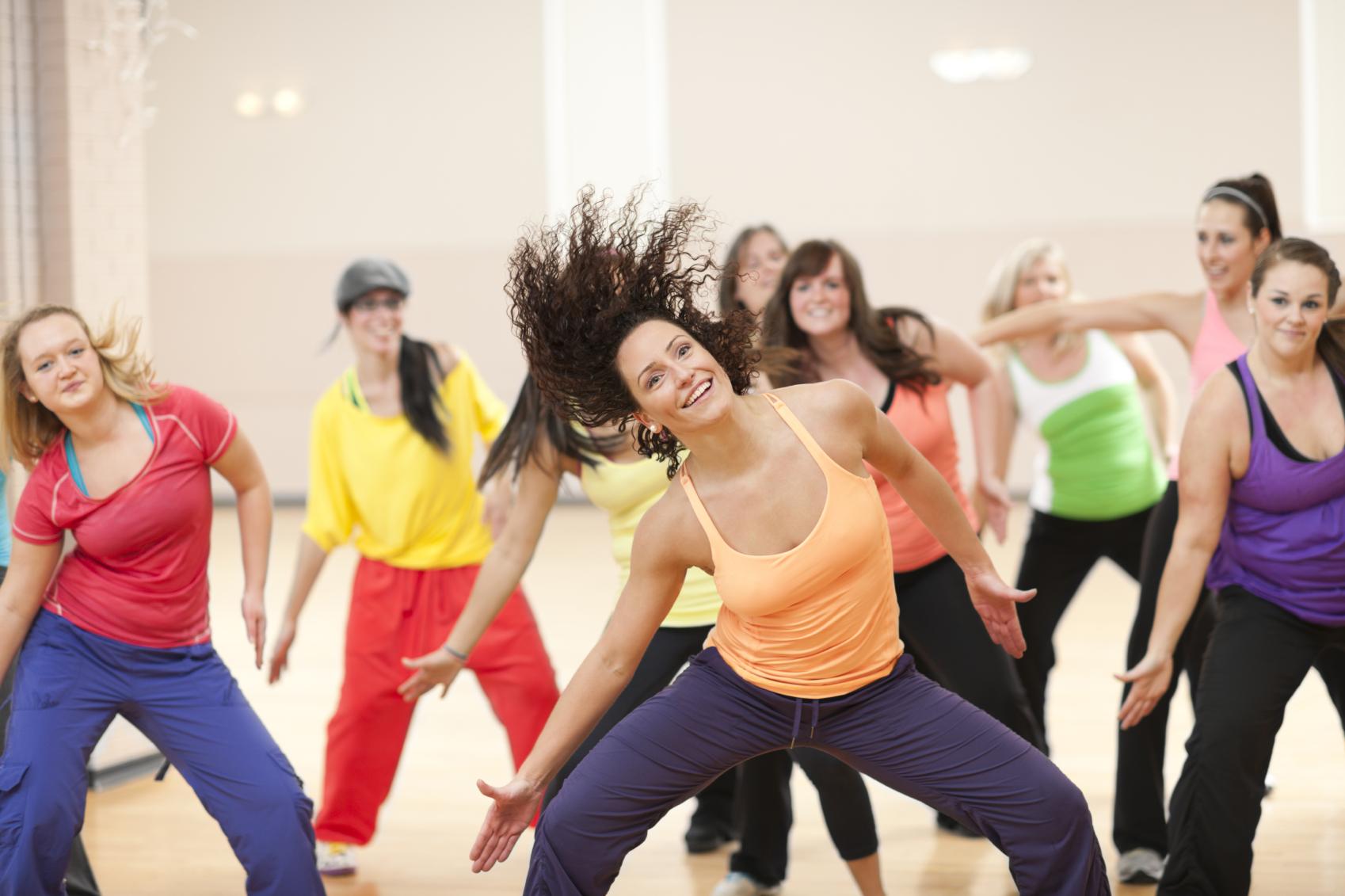
We remained dotty for dance, as the 2010s waved goodbye to streetdance and welcomed in a new fast-paced fitness trend… Zumba.
Incorporating elements of hip-hop, soca, salsa, samba, merengue and mambo, Zumba is an exciting workout that feels more like a trip to a nightclub with friends than a concerted effort to get fit, especially with the soundtrack of chart-topping hits.
Zumba to the Black Eyed Peas
So popular is Zumba, in fact, that upon joining a class you may well find yourself boogying alongside men, women, the young and the old. Everyone is welcome, and it’s exactly this atmosphere that has seen Zumba evolve to meet a variety of requirements.
You can now take part in Zumba classes incorporating step aerobics, toning sticks and even a swimming pool! It all depends on whether you are more focused on just having some good old-fashioned fun, or working your body in a specific way.
Keeping fit: today and beyond
Clearly, the ‘keep fit’ phenomenon has come a long way since the 1910s. At the time of writing, gyms full of specialist equipment are accessible to all. A better understanding of our bodies means that these machines and new exercise trends are perfectly (and safely) designed for our needs, and our workout clothes are now practical and stylish. Most importantly, however, we can take our pick from a wealth of exercises that are perfectly suited to a whole range of people.
You may want to bust your best moves in a Zumba class, do something more regimented at the gym, or just pound the pavements for free, in the company of the great outdoors. But what about the future? What will be the next big ‘keep fit’ trend? From modern twists on ballroom dancing to a resurgence of the Trim Twist, exercise is now so varied and creative that, who knows? Anything is possible…

